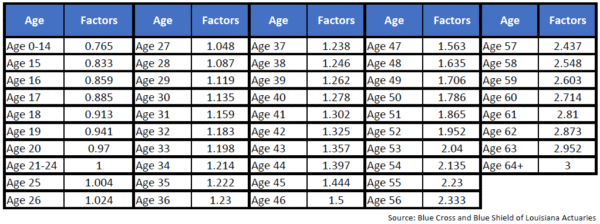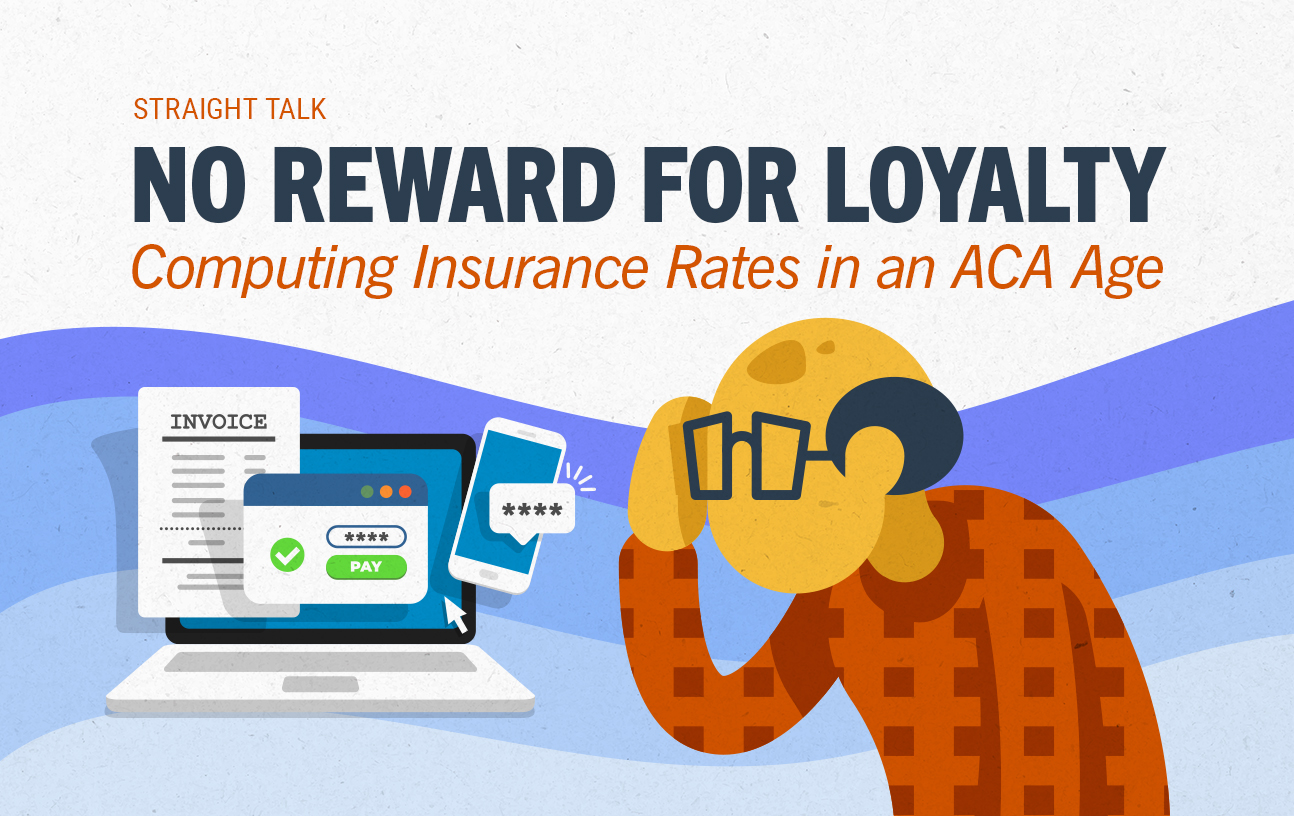Mike originally wrote and published this piece in 2015. Blue Cross has gotten similar messages in the years since, so he decided to go back and see if his answer still stands. He’s added more details in this post, but the crux of his answer is the same.

Grey text on a white background reads “Wow. Thanks for raising my monthly bill up another $55. Most companies reward long time members. #asshats
Blue Cross has an active social media presence on Facebook, Twitter and Pinterest. We got this Facebook message from a member, and this is my response.
Dear Sean,
You are 100% right to be concerned about your rates and how they are computed. Before March 2010, if a health insurance company wanted to create a rate discount based on loyalty, they could certainly do that. Today, thanks to the healthcare reform law enacted in 2014, it is not allowed.
The Feds Took Away Our Flexibility
When the Affordable Care Act (ACA) was passed on March 23, 2010, one of its many rules took the way health insurance is priced and rated away from insurance company control, and even from the state’s control, and sent that power to Washington, D.C. The newly created federal agency overseeing health insurance rates (CCIIO: Center for Consumer Information and Insurance Oversight) sent out rules that tell every health insurance company in the U.S how to price insurance.
Since 2014, the biggest drivers – 80% + of your rate – are:
- The amount of money your ENTIRE risk pool of people is spending. We call that the “total claims,” and it must be 80% or 85% of the premiums you pay.
- Your age. The feds say you must pay more as you get older. They even tell us how to divide things up based on age with no recourse.
Federal law says all we can do to set rates is look at total claims, and then divvy up the costs by age, tobacco use, geography and family size. We are not allowed to take anything else into account, including loyalty. That’s been the law since 2014, and it is not negotiable, sadly.
Age Rating Drives Increases
Our starting point is a basic rate is for a 21-year-old; let’s call that rate 1.0. Each year, as much as 18-months-in advance of the start of your health plan contract, we estimate the healthcare needs of all of the members in your risk pool. For simplicity’s sake, let’s say we’ve determined that the base rate is $100. That would be for the 21-year-old. We can then do some computing.
Federal law requires that rates go up every year based on age in increments. A few examples: At age 31, you will pay 1.159 times the premium of the 21-year-old, or $115.90 in my example. At age 45, you pay 1.444 times a 21-year-old’s premium, or $144.40 in my example. There is an increase every year once you turn 25.
When you get to age 53, you hit 2.0. That’s twice as much as the 21-year-old’s rate, or $200 in our example. At age 64, the rate is 3.0. That’s $300 for our example. These are increases solely based on the calendar; they have nothing to do with your health.

Our actuaries use this table calculate your premium based on your age.
This rate plan was specified in ACA and enforced by the CCIIO. There is zero flexibility. It is very straightforward and forbids us from rewarding people based on their health, loyalty or a host of other factors we might think are important to increasing customer satisfaction and loyalty.
Compare this to your car insurance. That industry is free to price any way a state will allow them to price, with no federal oversight at all. So the longer you go without a wreck, for example, the cheaper your rates could get. Health insurance cannot be priced that way, so your health or loyalty has been taken out of the equation as a factor by the law.
I’m sorry I don’t have better news for you. This one is directly because we no longer have sole authority (with oversight by the state) over our rates because of the ACA. And it affects us all, including my family’s insurance costs.
You can read more about age rating in this blog post.
Take care….mrb





Leave a Reply